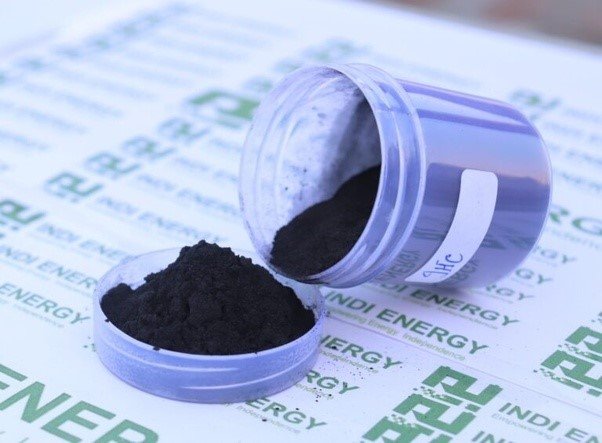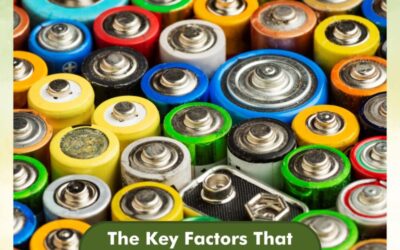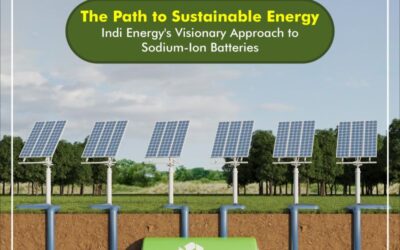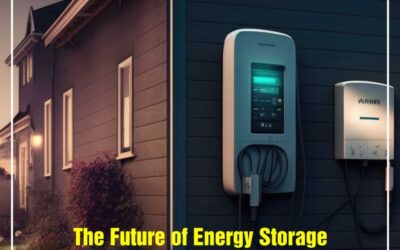
Curious about the history and inner workings of sodium-ion batteries? Don’t worry, Indi Energy, India’s first and only indigenous sodium-ion battery fabricator, has got you covered!
Did you know that the development of sodium-ion batteries and lithium-ion batteries started in the 1970s? It’s fascinating to think that both technologies had their beginnings around the same time. However, at that point, lithium-ion batteries were considered to have more potential, so all the focus and research went into advancing them while sodium-ion batteries took a backseat. This is one of the major reasons why sodium-ion batteries haven’t yet made it to the market. In this post, we will explore why sodium-ion batteries haven’t seen the light of day since the 1970s and how Indi Energy’s sodium-ion batteries are bringing a sustainable revolution to energy storage technology.
If sodium-ion batteries are so good, then why are we not already using them?
As we already shared, although the development of sodium ion batteries and lithium-ion batteries had commenced in the early 19070s, they were dropped in favor of lithium-ion batteries, which showed more promise. The most significant drawback of sodium-ion batteries is their lower power density compared to lithium-ion batteries. Over time, lithium-ion batteries have become more powerful, leaving sodium-ion batteries a bit lacking in comparison. The gap between the two technologies has continued to widen as more and more resources are pooled into lithium-ion battery technology.
Why should we be excited about sodium-ion batteries?
Times have changed, and as the world becomes more aware of the environmental impact of lithium mining and extraction, it becomes increasingly necessary to seek sustainable alternatives for energy storage. And that’s where sodium-ion batteries come into play!
Interestingly, sodium-ion batteries and lithium-ion batteries have several similarities in terms of chemistry. The battery components and electrical storage mechanism are the same, except for the ion carriers and cathode materials. Sodium has a chemistry that closely resembles that of lithium, allowing us to use similar compounds in both systems. What’s even more exciting is that we don’t need to invest in new manufacturing infrastructure to fabricate sodium-ion batteries. We can leverage the existing setup that is already in place for lithium-ion batteries, making the transition easier and more cost-effective.
However, one key difference lies in the choice of anode material. Sodium-ion batteries use hard carbon derived from biowaste and agricultural waste, while lithium-ion batteries typically use graphite. This distinction is crucial because it brings sustainability into the picture.

Why should we be excited about sodium-ion batteries?
Times have changed, and as the world becomes more aware of the environmental impact of lithium mining and extraction, it becomes increasingly necessary to seek sustainable alternatives for energy storage. And that’s where sodium-ion batteries come into play!
Interestingly, sodium-ion batteries and lithium-ion batteries have several similarities in terms of chemistry. The battery components and electrical storage mechanism are the same, except for the ion carriers and cathode materials. Sodium has a chemistry that closely resembles that of lithium, allowing us to use similar compounds in both systems. What’s even more exciting is that we don’t need to invest in new manufacturing infrastructure to fabricate sodium-ion batteries. We can leverage the existing setup that is already in place for lithium-ion batteries, making the transition easier and more cost-effective.
However, one key difference lies in the choice of anode material. Sodium-ion batteries use hard carbon derived from biowaste and agricultural waste, while lithium-ion batteries typically use graphite. This distinction is crucial because it brings sustainability into the picture.
Why does Indi Energy stand out from the other sodium-ion battery manufacturers worldwide?
At our start-up, Indi Energy, we are deeply involved in the research, development, and production of sodium ion batteries. We have taken a groundbreaking approach by utilizing hard carbon made entirely from biowaste and agricultural waste. This has resulted in the creation of one of the world’s highest-performing hard carbon. It’s truly a significant achievement! In our sodium-ion batteries, we incorporate a sodium cathode, a proprietary sodium electrolyte, and our very own BioBlack™ (hard carbon). By harnessing this sustainable energy storage technology, we have leaped forward. Our batteries are not only cheaper and non-flammable but also boast an energy efficiency of 90–95% across a wide range of temperatures. And most importantly, they are environmentally friendly!
To answer your question, Indi Energy aims to deliver value to society and the environment. As such, our efforts are focused on creating sustainable solutions that benefit all. This is why our batteries serve as “The Ideal Solution” to meet the needs of commercial and individual users looking to make an impactful contribution to the global cause: A sustainable future for us all. Indi Energy’s sodium-ion batteries and lithium-ion batteries serve the same purpose, but the added benefits of sodium-ion batteries are poised to surpass those of lithium-ion batteries and other contemporary storage technologies. It’s only a matter of time.
Our sodium ion batteries are cost-effective and in line with the UN Sustainable Development Goals. As an alternative to lithium-ion batteries and lead-acid batteries, Indi Energy’s sodium-ion batteries are safer and more sustainable and will indeed prove themselves to be a ‘Common Man’s Battery’!’
If you’re curious to witness the magic of sodium-ion battery technology yourself, we invite you to get in touch with us. With the commencement of the set-up of our sodium-ion battery production plant, we have taken definitive steps towards enabling the world’s energy independence and establishing Indi Energy as a leader in the sustainable energy storage sector.






